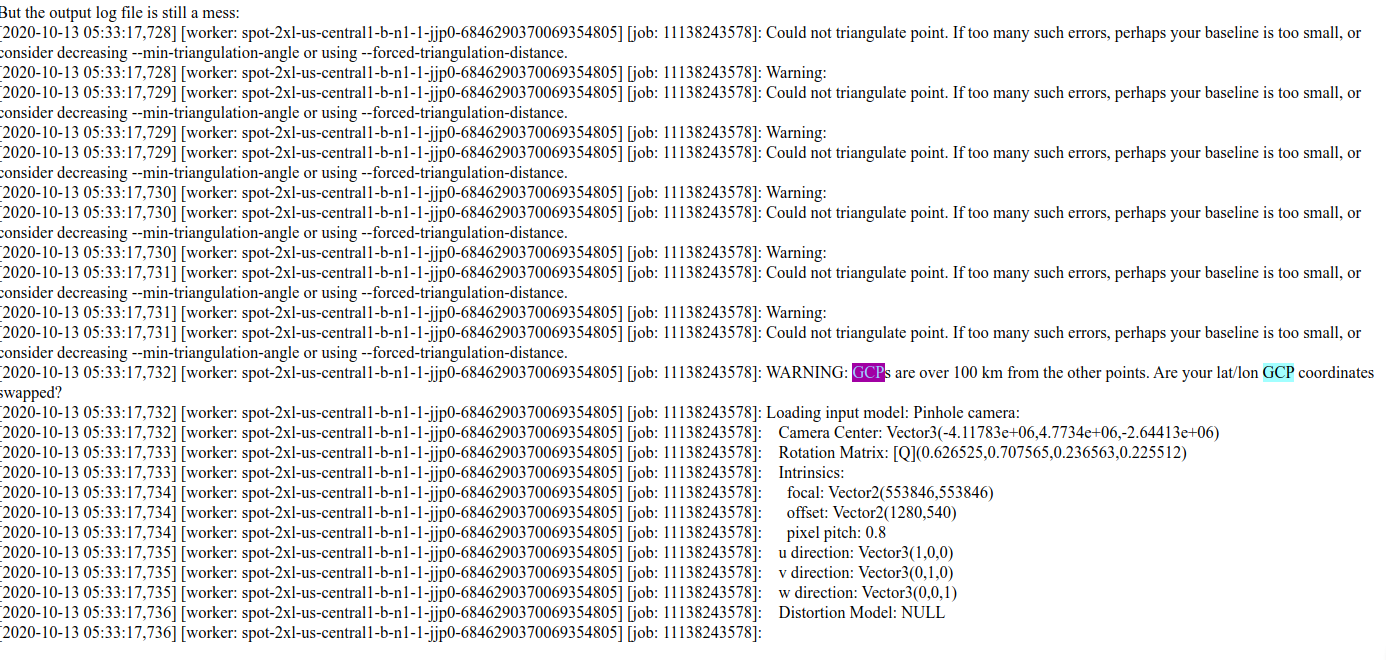The idea behind GCP initialization of pinhole cameras is that pinhole cameras would be less likely to have good nav data available than the other types of cameras we process and that GCPs, if available, would probably be the most accurate source of position information. In the case where your nav data is good hopefully the GCP are consistent with your camera information. I am not sure what is going on in this case. Probably the best place to start investigating is why that warning appears. Can you post your GCP files and also the output files when you run with --disable-pinhole-gcp-init and --num-passes 0 ?
Describe the bug When using bundle_adjust for pinhole cameras with GCPs which are seen in 2+ images, the input camera models are not honoured to triangulate points for the control network, and the gcps are used to initiate the pinhole cameras. This results in initial triangulated points with very high reprojection errors and awkward height values. When the same set of cameras are used without GCPs, the initially triangulated points are way better. The resultant camera obtained bundle_adjustment is not very good. The behaviour was suppressed when using
--disable-pinhole-gcp-init, and the triangulated points returned back to normalcy. However, should not this be the default ? Why should we be initialising cameras from gcps by default, until we are doing some camera resection problem? I am not sure if this happens with other pinhole sensors though, so maybe we can check with already available gcp file which are seen in multiple images and pinhole cameras to confirm them. To Reproduce--disable-pinhole-gcp-init): Run `bundle_adjust img1.tif img2.tif img1.tsai img2.tsai gcp.gcp --num-passes 1 --max-iterations 0 --disable-pinhole-gcp-init --datum WGS84 -o ba_gcp/run'. Look at the initial_residual_pointmap_log.csv.Expected behavior Case 2 pointmap screenshot: Case 1 pointmap screenshot:
Case 1 pointmap screenshot:

Case 3 pointmap screenshot:
Error Logs, Terminal Captures, Screenshots If applicable, please give us as much information as you can to help explain your problem.
Your Environment (please complete the following information):
Additional context One more point of concern is the that the GCPs are 100s of km away from the other triangulated points, are your Lat/lon value swapped warning message. We checked that this is not the case and the GCPs and triangulated points are reasonably close, but still this warning appears. Log screenshot for context: When should we be paying attention to this warning, and should we make it more meaningful ?
When should we be paying attention to this warning, and should we make it more meaningful ?
The experiments were primarly conducted by Seth Price, please chime in if I missed something. Hopefully the cameras produced with
--disable-pinhole-gcp-initflag are good for stereo for now.